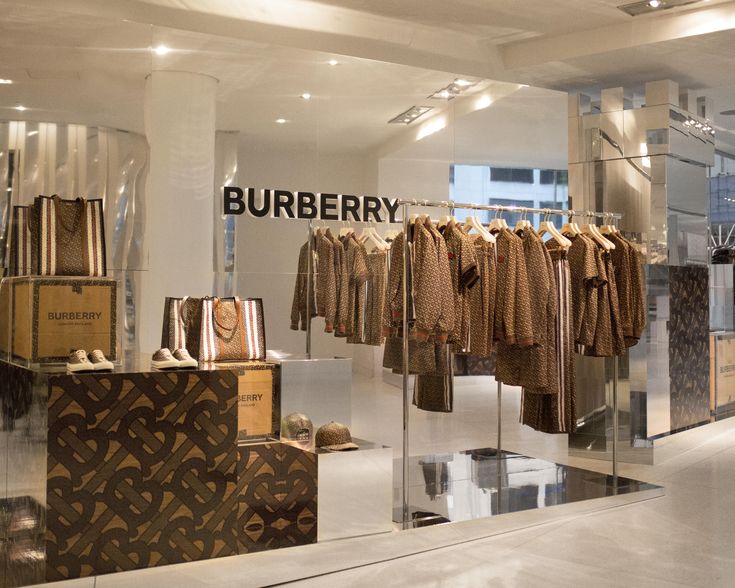Burberry Rejoins FTSE 100 Index after a turbulent period that saw the brand facing questions about its future and competitiveness in the global luxury market. The return to the prestigious index of the 100 largest companies listed on the London Stock Exchange marks a significant recovery for the iconic British fashion house, signaling renewed investor confidence and stronger financial performance.
For Burberry, rejoining the FTSE 100 is not just a matter of prestige. It represents a validation of recent strategic shifts and a broader recovery in the luxury sector. The move is also likely to attract more institutional investors, since many funds track the FTSE 100 as a benchmark.
Burberry’s Recent Struggles
Burberry has long been a symbol of British heritage and luxury, known for its iconic trench coats and distinctive check pattern. However, in recent years, the company faced declining sales, inconsistent creative direction, and challenges adapting to the fast-changing luxury market.
In 2024, Burberry was removed from the FTSE 100 after its share price slumped, driven by disappointing results in Asia, weaker demand in Europe, and struggles to connect with younger consumers. Investors questioned whether Burberry could keep up with rivals like LVMH, Kering, and Hermès, who were benefiting from strong demand for high-end fashion.
The company’s creative direction was also under scrutiny. Efforts to reposition Burberry as a cutting-edge luxury brand were met with mixed reactions, leaving its identity somewhat uncertain in a competitive market.
The Road to Recovery
Burberry’s return to the FTSE 100 is the result of several changes that helped stabilize the business and restore investor confidence.
- Leadership and Strategy – Under new management, Burberry focused on refining its brand identity, cutting costs, and improving efficiency across its operations. The company also doubled down on its heritage, emphasizing timeless British craftsmanship while blending it with modern design elements.
- Stronger Financials – Recent earnings reports showed a rebound in sales, particularly in Asia, where Burberry has a strong presence. The recovery of luxury spending in China and Southeast Asia boosted revenues, while strategic store openings in key cities enhanced visibility.
- Digital Innovation – Like other luxury houses, Burberry has embraced e-commerce, virtual fashion shows, and digital customer engagement. These steps helped the brand stay relevant in an industry where online presence is increasingly critical.
- Resilient Luxury Demand – The broader luxury sector has been resilient, with wealthy consumers continuing to spend on high-end goods despite global economic uncertainty. This macro trend worked in Burberry’s favor.
Why the FTSE 100 Matters
The FTSE 100 is more than just a list—it serves as a measure of corporate health and is closely watched by global investors. Being in the index provides companies with:
- Increased visibility among global investors.
- Access to passive funds, since many index funds automatically include FTSE 100 companies.
- Prestige and stability, reinforcing Burberry’s reputation as a global player.
Burberry’s re-entry highlights its improved market capitalization and signals a turnaround story that investors can rally behind.
The Luxury Sector Outlook
Burberry’s comeback coincides with strong performance across the luxury sector. While inflation and global uncertainty have weighed on consumer spending in some areas, luxury goods have shown remarkable resilience.
- Asia remains the key growth engine, with China’s luxury demand bouncing back after the pandemic and restrictions.
- High-net-worth individuals continue to drive sales of premium products, including fashion, accessories, and leather goods.
- Sustainability and heritage are increasingly influencing consumer decisions, areas where Burberry has an advantage given its legacy and renewed focus on long-lasting craftsmanship.
Competitors like Louis Vuitton, Gucci, and Hermès have set the bar high, but Burberry’s renewed focus on British identity and modern luxury positions it to capture its share of the market.
Challenges Ahead
Despite its re-entry into the FTSE 100, Burberry still faces challenges:
- Brand positioning – The company must balance its heritage with innovation to stay relevant with younger generations.
- Global competition – Rivals backed by larger parent groups have deeper pockets and broader global reach.
- Economic uncertainty – A slowdown in global growth or reduced luxury spending could impact future performance.
- Sustainability pressures – As the fashion industry faces increasing scrutiny over environmental practices, Burberry must continue to invest in sustainable innovation.

Investor Confidence Restored
For investors, Burberry’s return to the FTSE 100 is a positive signal. The company’s share price recovery, stronger financials, and improved strategic direction show that management has taken steps to restore confidence. Analysts suggest that Burberry could benefit further if it continues to expand in Asia, refine its digital presence, and maintain tight cost controls.
The reinstatement may also attract more institutional investment, as many large funds that track the FTSE 100 will once again include Burberry in their portfolios.
What This Means for the UK Market
Burberry’s rejoining the FTSE 100 is also a boost for the UK market. At a time when London is competing with global financial hubs for investor attention, having one of its most recognizable fashion brands back in the index reinforces the city’s standing.
It also highlights the importance of the luxury sector to the UK economy, not just in terms of exports but also in cultural influence. Burberry, often seen as a symbol of British style, carries weight beyond financial metrics.
Conclusion
Burberry Rejoins FTSE 100 Index, marking a significant turnaround for one of Britain’s most iconic luxury brands. After being dropped due to weak performance, the company has demonstrated resilience through strategic changes, a stronger financial outlook, and renewed investor confidence.
While challenges remain in a highly competitive luxury landscape, Burberry’s re-entry into the FTSE 100 shows that it is once again on solid ground. For investors, consumers, and the UK economy, this development is a positive sign that Burberry is back among the top players in global fashion.
Source: BBC, Financial Times


